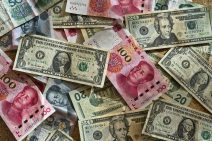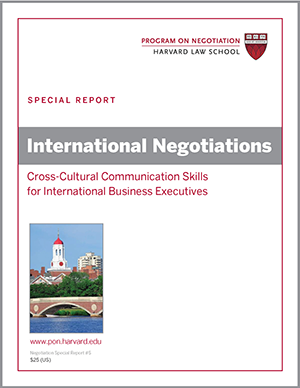
During the 2016 presidential campaign, Donald Trump repeatedly asserted that if he were elected, eliminating the U.S. trade deficit with China would be a top priority. But once in office, Trump was alternately swayed by opposing factions in his administration: pro-business moderates and America-first trade hawks. The resulting roller-coaster ride, as summarized in the Wall Street Journal, serves as a reminder that building a winning team in negotiation requires effective team leadership skills.
A Changing of the Guard
At Trump’s Mar-a-Lago resort in Florida in April 2017, he and China’s president, Xi Jinping, agreed on a 100-day plan to reduce economic tensions. In negotiations between Wang Yang, one of China’s four vice premiers, and U.S. commerce secretary Wilbur Ross, China promised to try to reduce its steel production to allow American steel to rebound. But when Ross presented the draft deal to Trump, he said it hadn’t gone far enough and called off the negotiation, according to the Journal.
For a new round of trade talks in Beijing, Trump replaced Ross with U.S. trade representative Robert Lighthizer, more of a hard-liner on trade. Lighthizer persuaded Trump to reject a new concession from China—greater access to the nation’s financial sectors for foreign firms—as too little, too late. “They’re playing you,” Lighthizer told the president, sources told the Journal.
Carrots and Sticks
After Trump began threatening to levy major tariffs on China, U.S. treasury secretary Steven Mnuchin set up trade talks in Beijing for May 2018, despite objections from Lighthizer. Trump appointed Mnuchin to head the delegation with Lighthizer on the team.
The budding rivalry, evidently part of Trump’s strategy for building a winning team, was rooted in differing views on the trade imbalance with China. Lighthizer reportedly viewed tariffs as a useful stick for punishing China for its past trade policy and motivating change. Mnuchin preferred to use negotiation as a carrot to spur concessions. At different times, both approaches—escalation and diplomacy—appealed to Trump, but Lighthizer’s views repeatedly won out, the Journal reports.
Conflict in the Ranks
On the first day of the Beijing talks, Lighthizer presented tough new U.S. demands, including calling on China to reduce its $375 billion trade surplus with the United States by $200 billion within two years, according to the Journal. The next day, in earshot of Chinese officials, White House adviser Peter Navarro, another U.S. hard-liner on trade, angrily accused Mnuchin of attempting a power grab by setting up a private negotiating session with Chinese vice premier Liu He.
In subsequent meetings, when the Chinese asked Lighthizer for his input, he reportedly often replied, “I have nothing to say.” Both Chinese and American representatives concluded he had been sent to the talks to police Mnuchin.
The Return of Tariff Man
After the White House announced a new round of tariffs on Chinese imports, China canceled a negotiation between Liu and Mnuchin in Washington, D.C. The Chinese government hoped Trump would back down on tariffs if the Republicans fared poorly in the 2018 midterm elections, but when his party held on to the Senate, the president declared victory.
In the lead-up to G20 meetings in Argentina in late 2018, Trump “veered from optimism to wariness about a deal, sometimes in the course of a single statement,” according to the New York Times. Mnuchin continued to promote compromise, while hawks such as Navarro urged Trump to double down on tariffs, the Times reports. Moderates tried unsuccessfully to keep Navarro from taking the trip.
Over dinner with their teams in Buenos Aires on December 1, Trump and Chinese president Xi Jinping reached a deal to freeze tariffs and agreed to another round of talks to resolve their differences. That night, the business moderates won. Three days later, Trump tweeted: “President Xi and I want this deal to happen, and it probably will. But if not remember … I am a Tariff Man.” Stocks plunged in response.
Trump continued to escalate his trade war with China through 2019. In January 2020, the two nations reached a limited “phase one” trade agreement, but China failed to meet its commitments, and tensions continued through the remainder of Trump’s presidency.
Building a Winning Team
These team-building strategies, derived from missteps in the U.S.-China trade dispute, can be applied to building a winning team for any intricate negotiation or conflict-resolution effort:
-
Seek diverse opinions, then draw your own conclusions. When setting a strategy for an important negotiation or conflict-resolution effort, it can be valuable to seek a variety of viewpoints. But effective leadership and teamwork require us to craft a unified approach. Although both carrots and sticks can be effective, veering repeatedly between cooperation and punishment stands in the way of trust-building and progress.
-
Promote team cohesion. If the other team detects chaos and conflict within your ranks or a poorly disguised good-cop, bad-cop tactic, they are liable to take advantage. Successful team-building strategies include spending ample time preparing to negotiate. Negotiate key roles, discuss substance, and confront any differences that emerge. When disagreements arise during talks, work them through privately.
-
Size up the other side. Don’t take the other team’s apparent chain of command at face value. Size up and research individual negotiators’ areas of expertise, perspectives, and influence in their organization. For effective leadership, rather than treating surprising behavior as an anomaly, continually update your assessments. Strive to make inroads with those who appear to have the most sway with top leaders.
What strategies have you found effective in building a winning team?





